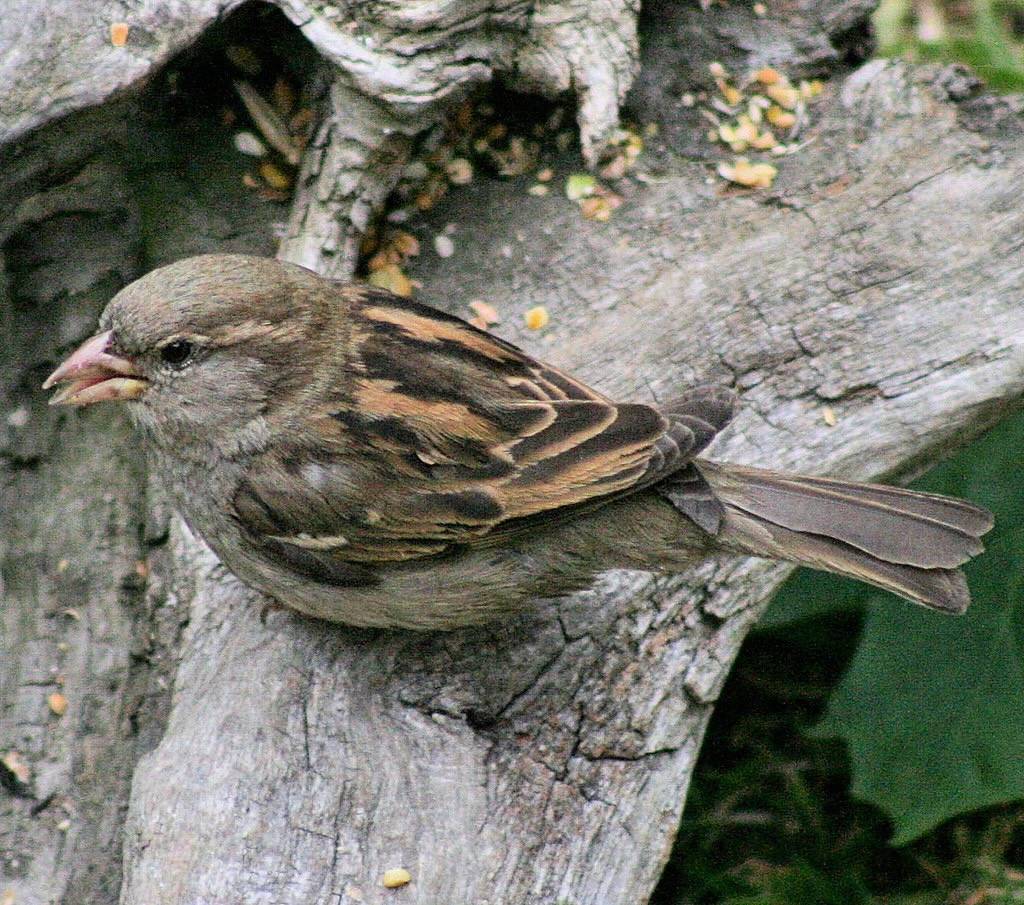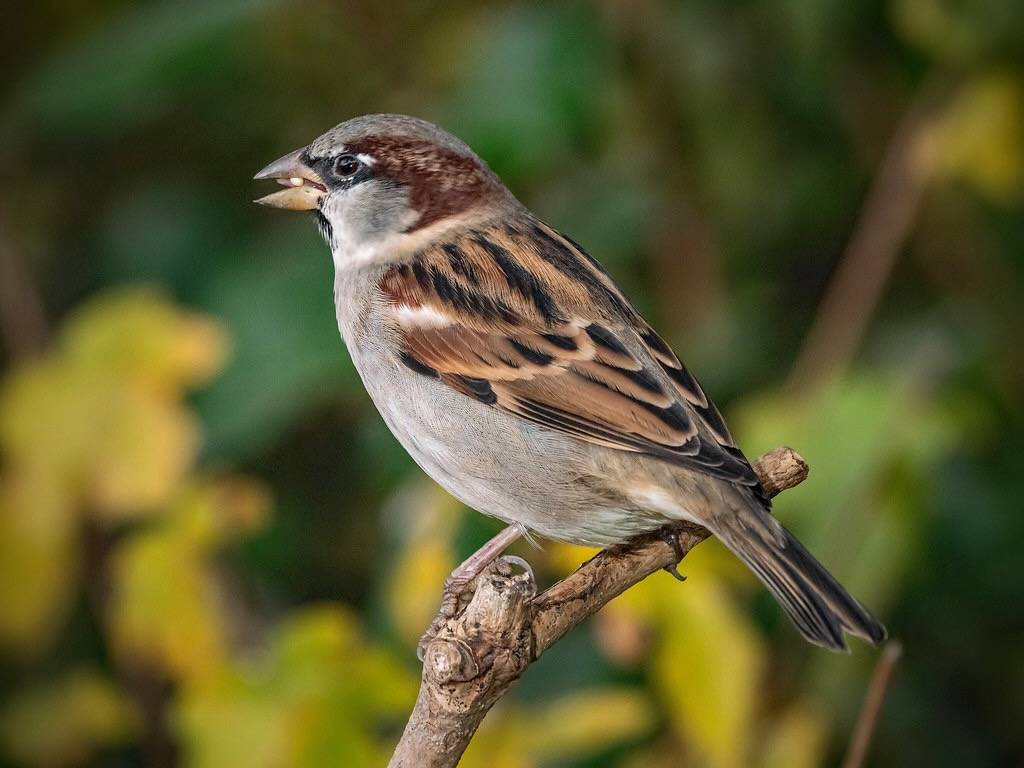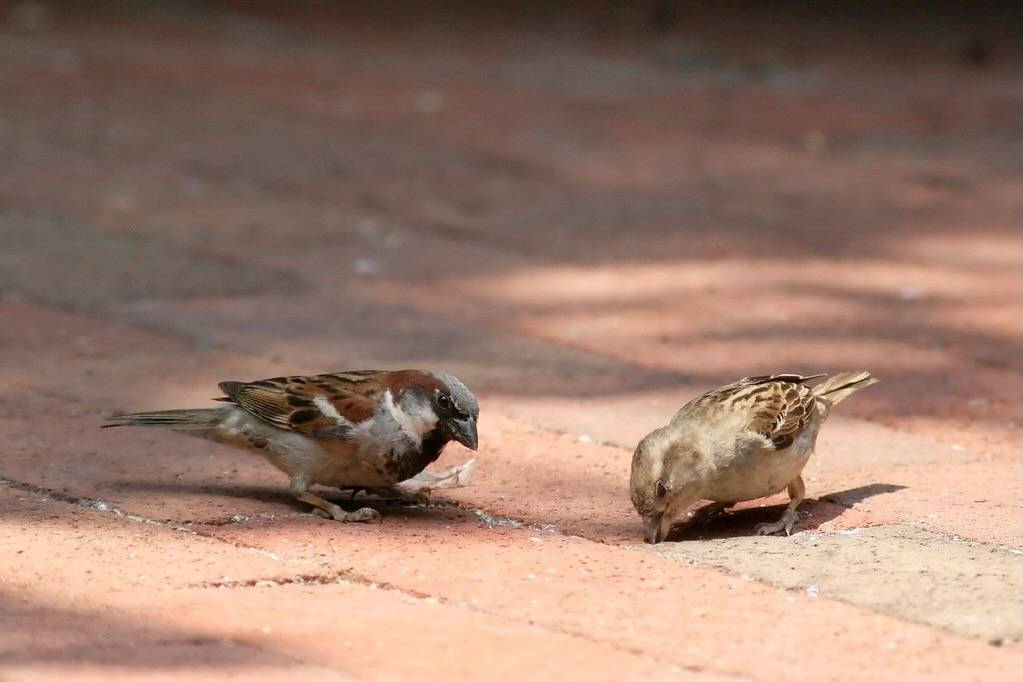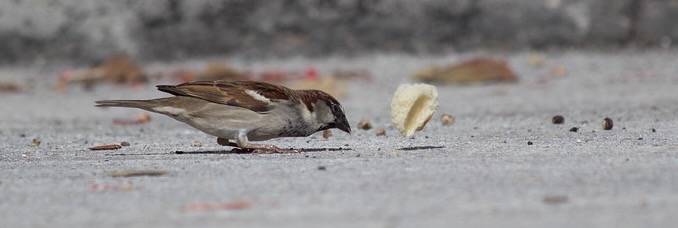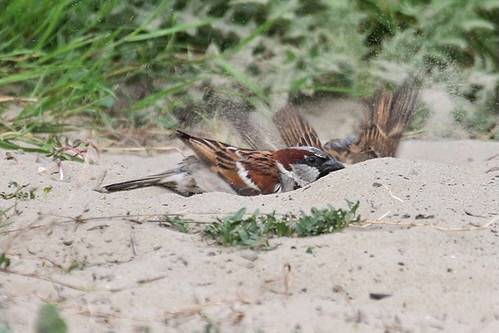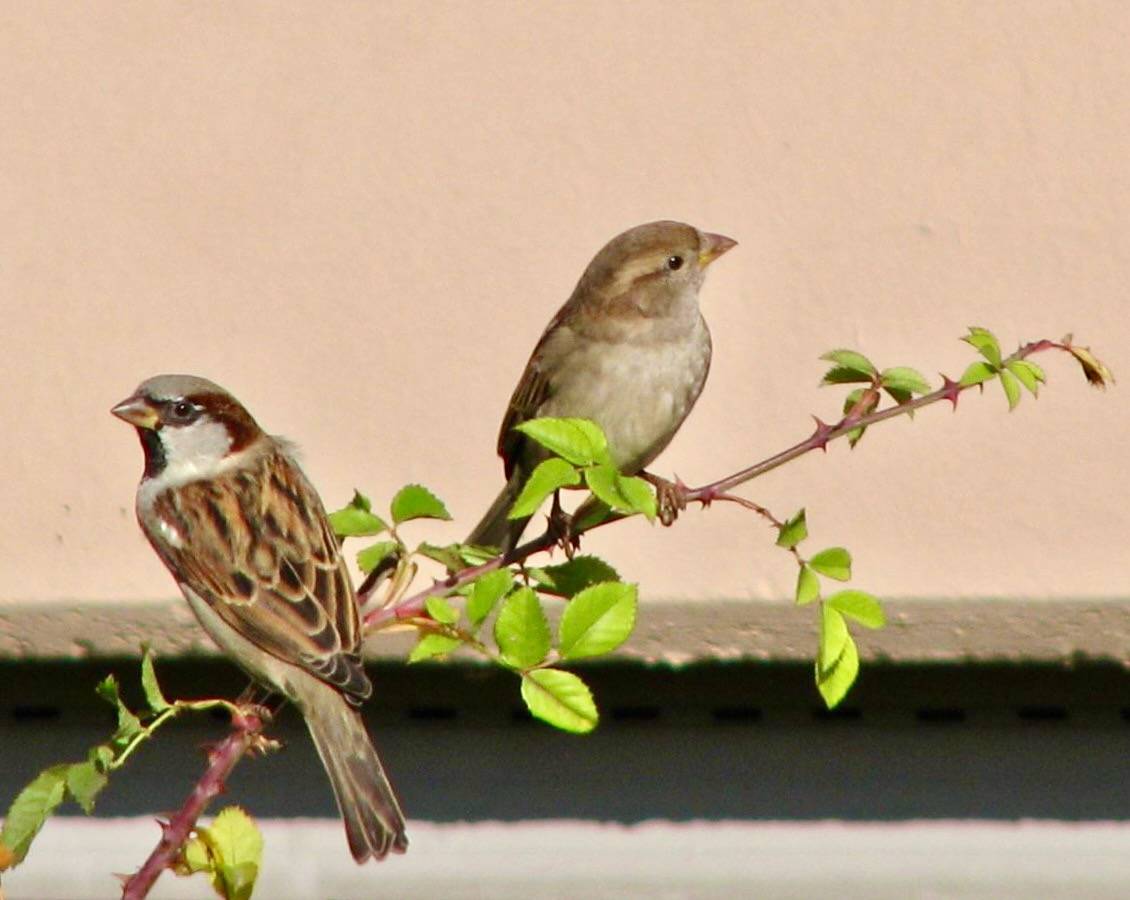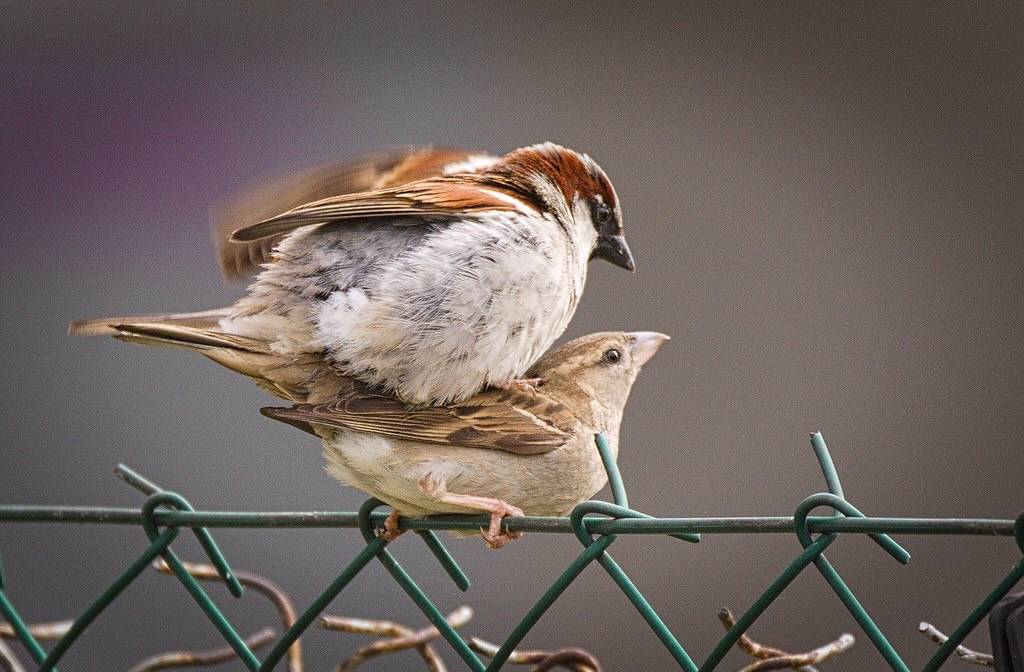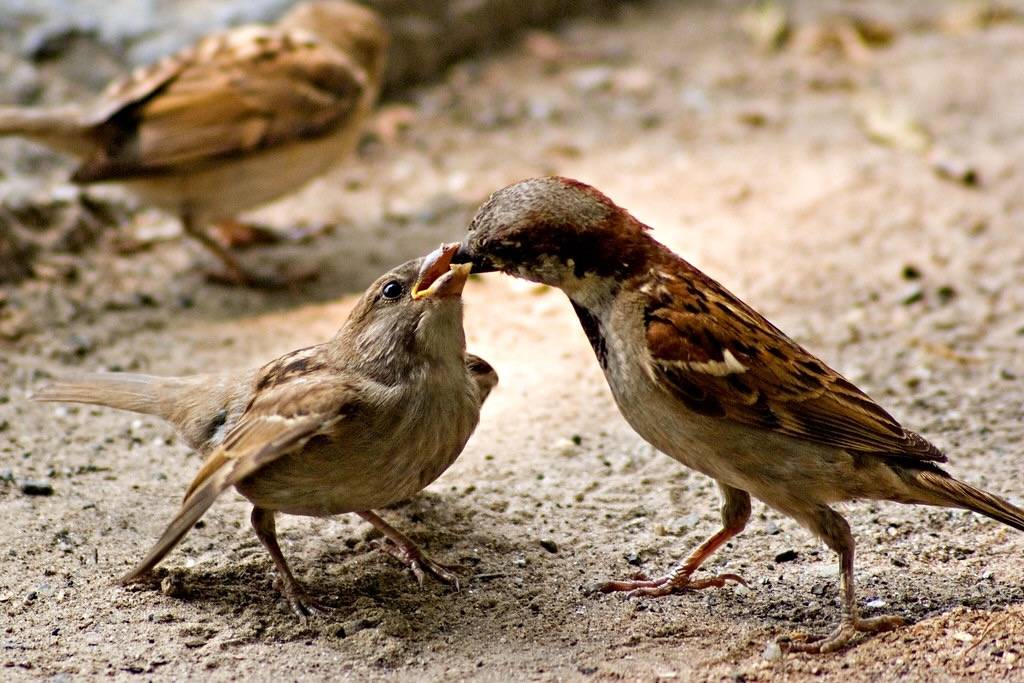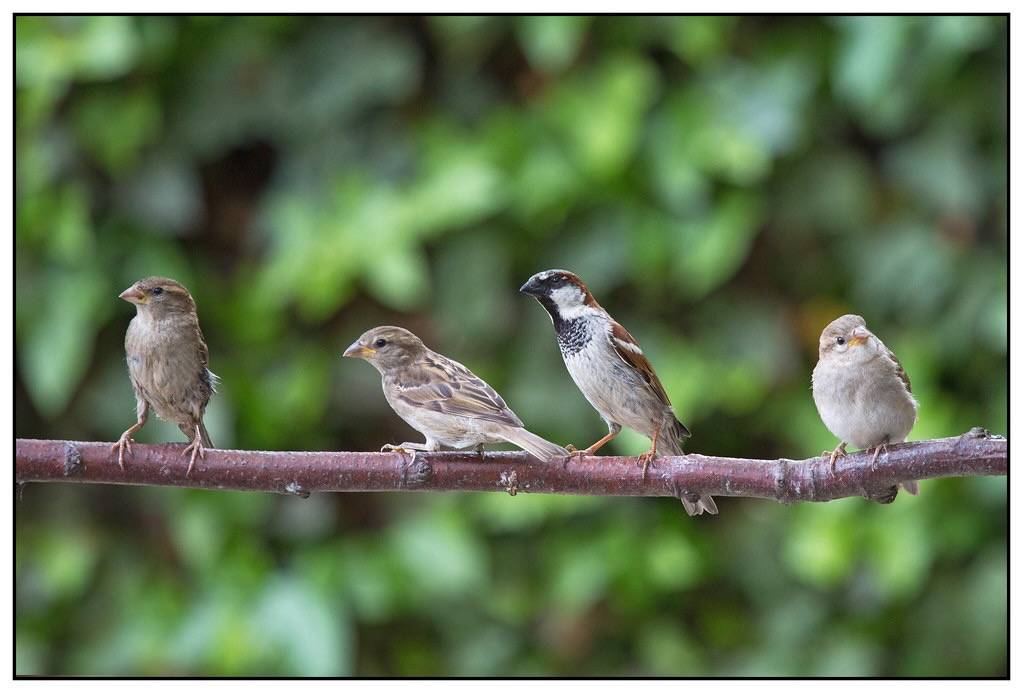House Sparrow
The House Sparrow is a year-round resident at Salter Grove. Despite the possibility of seeing eleven other sparrows in the park, this introduced species is recognized by most visitors because it is a familiar and at times noisy presence in urban and suburban settings.
It occurs throughout the park along edges, most often in open areas with thick brush. During the breeding season, solitary males and females scout vegetation along the causeway and Marsh Trail for nesting material. They quickly disappear into thickets with soft white swan feathers in their beaks to complete the hidden nest.
During the colder months, small flocks of adults and juveniles congregate in tangled shrubbery. They can be found along the storm drain near the dawn redwood at the northern end of the park, or in the thickets of Japanese knotweed and rambler rose bordering Audubon Field at the southern end. Although noisy when hidden in dense brush, they are mostly silent in the open, or when flying from one thicket to another.
Originally native to the Middle East, the range of the granivorous House Sparrow slowly expanded to Eurasia and Northern Africa along with the spread of agriculture. Introductions by European settlers during the age of colonization expanded its range to other continents. It has continued to move into new areas on its own and is the most widely distributed wild bird species in the world.
House Sparrows were first released in Brooklyn, New York in 1851 and by 1900, naturalized individuals were observed in the Rockies! It is one of the most abundant birds in North America.
It is considered an invasive species because it is prolific, consumes agricultural products, thrives on human food waste, and displaces native species from nesting sites. However, its abundance has not gone unchecked. The first setback occurred when the horse and carriage was replaced by the automobile. Spilled grain and the undigested grain in horse droppings had supported large populations of birds in urban and suburban habitats.
In recent decades, a steady population decline of the House Sparrow has been noted in Asia, Western Europe and North America. Factors such as the construction of dwellings unsuitable for harboring nests, agricultural practices that reduce availability of insect food for juveniles, and predation by cats have combined to empty cities of this once abundant bird.




